 What is Energy?
What is Energy?
Do you know all the types of energy? Do you know what exactly are light energy, electrical energy, kinetic energy? Do you know that it is possible to change one type of energy to another? Learn new information and complete the quiz!
Link: http://www.childrensuniversity.manchester.ac.uk/interactives/science/energy/what-is-energy/
Author: The Children’s University of Manchester (Energy and the environment)
Theme: Energy
Age range: 10 – 13
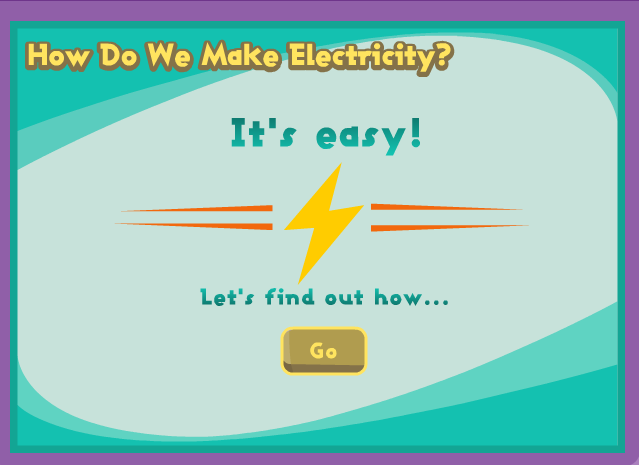 How do we make electricity?
How do we make electricity?
Have you ever imagined how electricity is made? In this simple presentation you will learn about making electricity in really small and really large scale! In this chapter you will learn that coal and gas are not the only possible source for making electricity! You will learn basic terms concerning electricity production from sun, water and wind! At the end you have to answer 8 questions in the quiz. Be careful, questions are tricky!
Link: http://www.childrensuniversity.manchester.ac.uk/interactives/science/energy/electricity/
Author: The Children’s University of Manchester (Energy and the environment)
Theme: Energy, electricity
Age range: 10 – 14
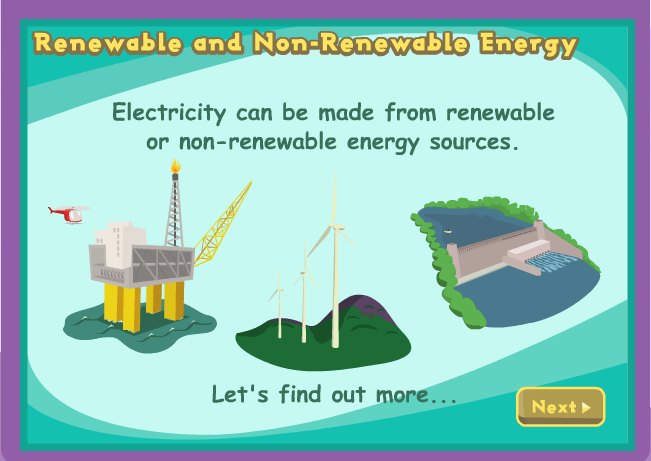 Renewable and non-renewable energy
Renewable and non-renewable energy
Do you know the differences between renewable and non-renewable energy sources? Do you know which type of energy source is less harmful for the environment? Are you sure that you classified all the sources correctly? Read the inscriptions, divide energy sources and complete the quiz.
Link: http://www.childrensuniversity.manchester.ac.uk/interactives/science/energy/renewable/
Author: The Children’s University of Manchester (Energy and the environment)
Theme: Renewable energy, non-renewable energy
Age range: 10 – 14
 Advantages and disadvantages…
Advantages and disadvantages…
Do you know all the advantages and disadvantages of renewable and non-renewable energy sources? Which one is the cheapest, which one is the most expensive? Which one is absolutely safe and environmentally friendly? Where can you install different types of power plants? Check the description of each energy source and then complete the quiz.
Link: http://www.childrensuniversity.manchester.ac.uk/interactives/science/energy/advantages/
Author: The Children’s University of Manchester (Energy and the environment)
Theme: Renewable energy, non-renewable energy
Age range: 10 – 14
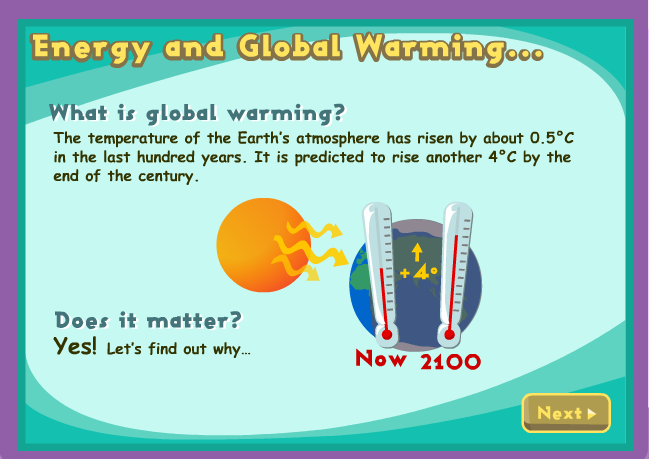 Energy and global warming
Energy and global warming
The climate is changing, it is undeniable, but what are the main causes of global warming and can the people do something to stop it? What are the main consequences of temperature increase? What is the most endangered regarding to global warming? You will find answer to these questions in this game. Remember about the quiz at the very end!
Link: http://www.childrensuniversity.manchester.ac.uk/interactives/science/energy/globalwarming/
Author: The Children’s University of Manchester (Energy and the environment)
Theme: Global warming, energy, environment
Age range: 10 – 14
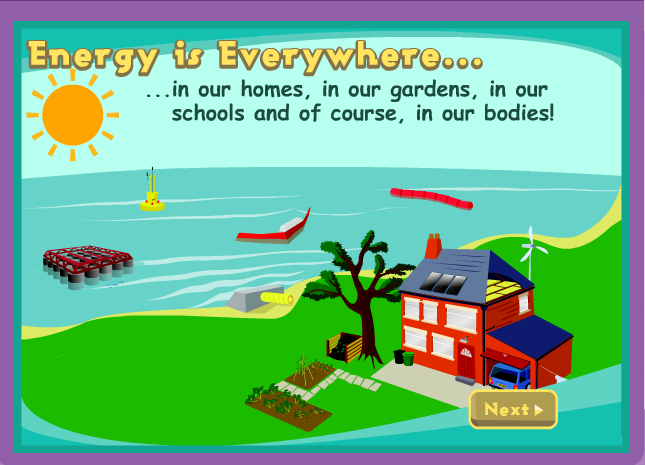 Interactive house
Interactive house
In this link you will see interactive house. Your task in this game is to find all the ways and methods which will save energy. Energy saving potential is everywhere: the kitchen, the living room, the bathroom, the garden. Some solutions are very easy, and some needs more efforts. Ideas included in the game were mentioned in previous exercises. You can save your planet and decrease energy bills!
Link: http://www.childrensuniversity.manchester.ac.uk/interactives/science/energy/energyhouse/
Author: The Children’s University of Manchester (Energy and the environment)
Theme: Energy saving, environmental protection, renewable energy sources
Age range: 10 – 14
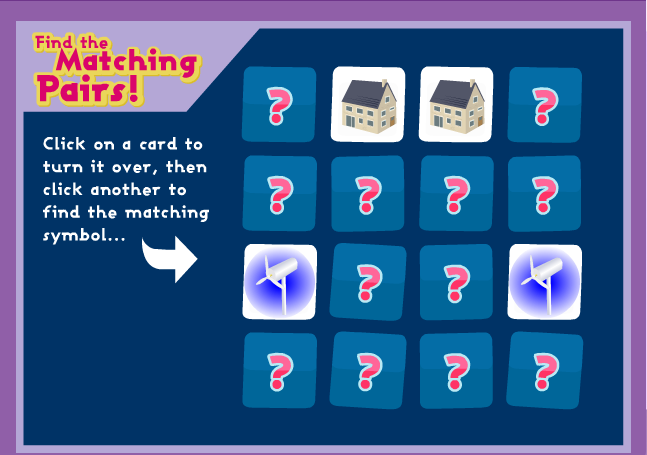 Energy matching pars
Energy matching pars
In this game your task is to find the matching symbols and improve your memory! After collecting two symbols, you can read extra information about it, for example special abilities of trees and human body, curiosities about the airplanes, light bulbs and wind turbines. Try to be as quick as possible, but do not skip the description of each picture.
Link: http://www.childrensuniversity.manchester.ac.uk/interactives/science/energy/matchingpairs/
Author: The Children’s University of Manchester (Energy and the environment)
Theme: Energy saving, renewable energy
Age range: 7 – 13
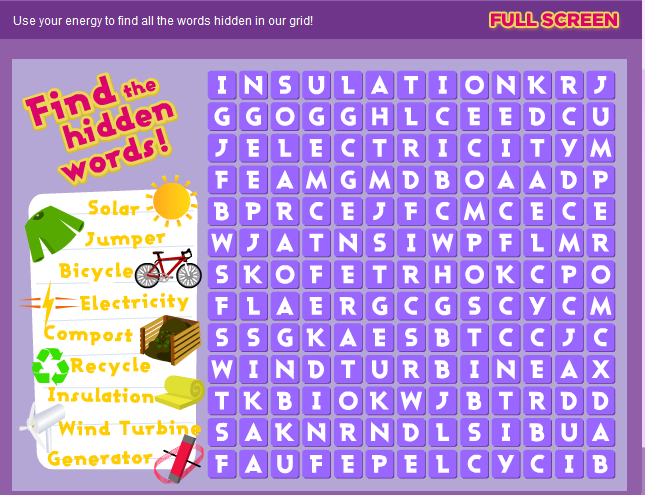 Energy Word Search
Energy Word Search
Find the hidden words among the letters. These words are connected with energy and environment. Try to be as quick as possible, but look out it is not easy task. Some words use the same letters, they can be also written backwards.
Link: http://www.childrensuniversity.manchester.ac.uk/interactives/science/energy/energywordsearch
Author: The Children’s University of Manchester (Energy and the environment)
Theme: Energy, renewable energy
Age range: 7 – 12
















 Die alleinige Verantwortung für den Inhalt dieser Webseite liegt bei den AutorInnen. Er muss nicht unbedingt die Meinung der Europäischen Union wiederspiegeln. Weder die EACI noch die Europäische Kommission sind für jegliche Verwendung der darin enthaltenen Informationen verantwortlich.
Die alleinige Verantwortung für den Inhalt dieser Webseite liegt bei den AutorInnen. Er muss nicht unbedingt die Meinung der Europäischen Union wiederspiegeln. Weder die EACI noch die Europäische Kommission sind für jegliche Verwendung der darin enthaltenen Informationen verantwortlich.